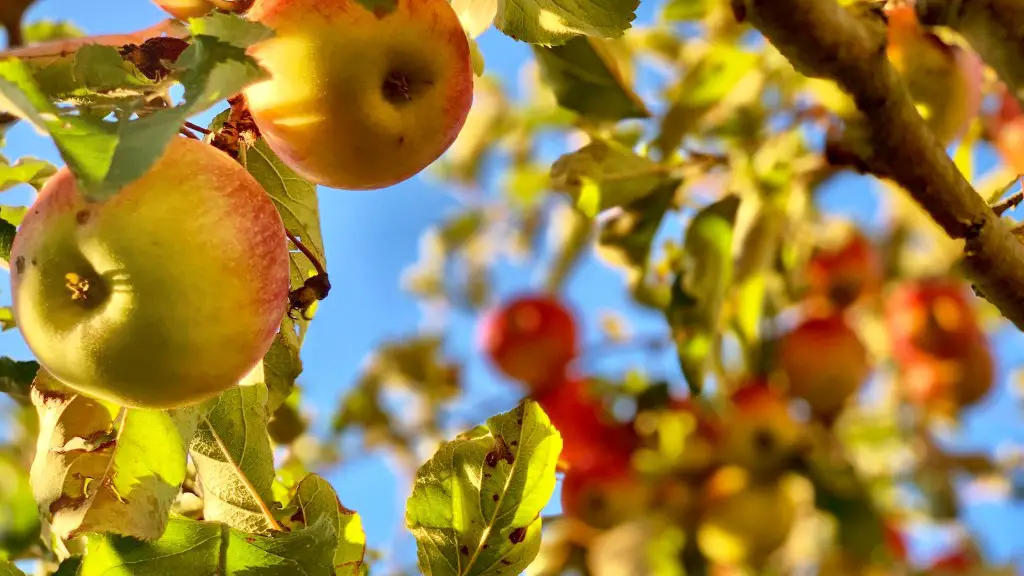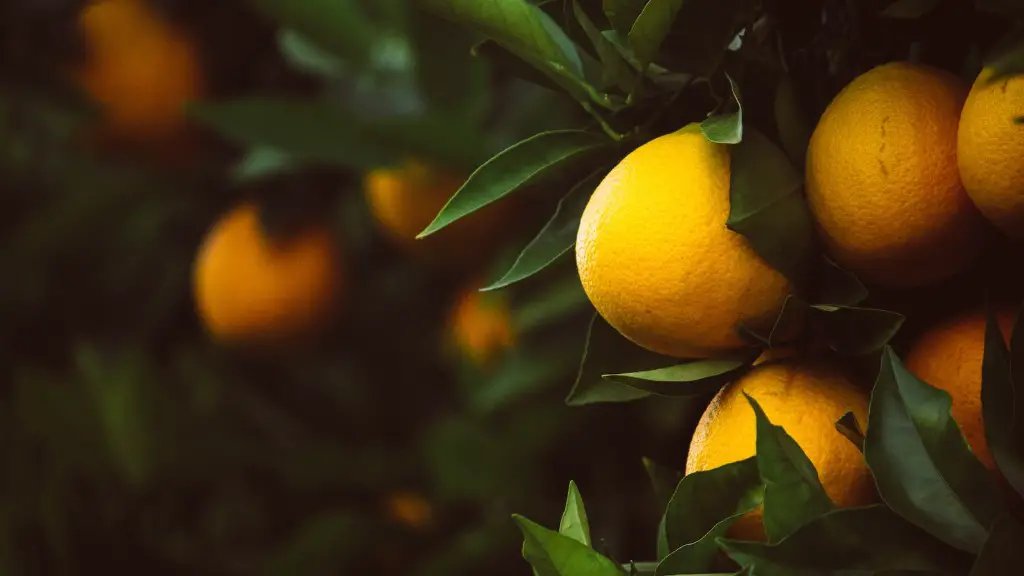Knowing what type of apple tree you have can help you determine the best way to care for it. By looking at the leaves, the bark, and the fruit, you can easily determine the type of apple tree you have. Here are a few tips to help you identify an apple tree:
1. Look at the leaves – an apple tree’s leaves are unique and can help you identify it. Most species have oval-shaped leaves that are slightly curved, and some have serrated edges. Additionally, apple tree leaves usually alternate along the branch, and many have sections of five or seven.
2. Inspect the bark – the bark of an apple tree can vary greatly in color, texture and pattern. However, many species have smooth, silver-gray bark that can have horizontal lines, vertical lines or even patches of dapple or mottled markings.
3. Feel the fruit – some species of apple trees have smooth fruit, while others may be more bumpy or have ridges. Additionally, certain species produce larger or smaller apples, so take a look at your tree’s fruit size, shape and skin texture to help you identify it.
4. Consider the location – some types of apple trees are better suited for certain climates. If you happen to live in a cold climate, for example, you may want to consider a variety that is more tolerant of colder temperatures.
5. Research the varieties – Apple trees come in a variety of shapes and sizes, so it pays to do your own research. Take a look at the different varieties of apple trees and compare their characteristics with the characteristics of your tree to determine its type.
Identify an Apple Tree Growing Environment
In addition to understanding the characteristics of an apple tree, it’s also important to consider the growing environment for the apple tree. Depending on your location, you will want to determine the best planting environment for your apple tree. Some important factors to consider include:
1. Sunlight – Generally, apple trees require 6 to 8 hours of sunlight each day. Consider the size of the canopy and orientation of other plants and trees to determine the amount of available sunlight.
2. Soil – Apple trees prefer soil that is nutrient rich and well-draining. You may want to consider getting a soil analysis to determine the pH levels and other important characteristics of the soil.
3. Water – Apple trees will need adequate water to grow and thrive. Determine the rate at which water is formed and the area that is easiest to irrigate in order to make sure your apple tree has enough water.
4. Pruning – Pruning an apple tree is a great way to ensure it grows healthily and remains productive year-round. Consider the size of the tree, the type of branches and the desired shape of the tree to determine the best pruning plan.
5. Pests – Apple trees can be susceptible to certain pests, diseases, and parasites. Be sure to familiarize yourself with the common pests and diseases that can affect apple trees in your area so you can take proper precautions.
Fertilization for Apple Trees
Fertilizing apple trees is essential for maintaining or enhancing the quality of the fruit. The type of fertilizer and the timing of the application will depend on the type of apple tree and the environment it is growing in. Here are a few tips to help you determine the best fertilizer for your apple tree:
1. Test the soil – Fertilizing your apple tree with the wrong type of fertilizer can cause damage. Consider getting a soil sample analyzed to determine the nutrient levels in your soil.
2. Consider the fertilizer type – There are many types of fertilizers available for apple trees, including organic and inorganic fertilizers. Consider the pros and cons of each type and determine which is best suited for your apple tree.
3. Determine the application rate – Applying too much fertilizer can cause damage to your tree. Consult with a local expert or an agriculture specialist to determine the correct application rate.
4. Choose a delivery method – You can choose to apply fertilizer by hand or by using a machine or spreader. Again, consult with a local expert or an agriculture specialist to determine which delivery method is best for you.
5. Monitor the tree – After applying the fertilizer, monitor your apple tree to make sure it is getting the nutrients it needs, but not too much. Keep an eye on the leaves, bark, and fruit for any signs of damage or nutrient deficiency.
Organic Treatment for Apple Trees
Organic treatments are a great way to protect your apple tree from damaging insects and diseases. Some of the most common organic treatments for apple trees include insect repellents, crabgrass preventers, and beneficial microorganisms. Here are a few tips to help you find the right organic treatment for your apple tree:
1. Determine the problem – Spend some time researching and identifying the specific insect or disease that is causing the problem. This will help you determine the best organic treatment for your apple tree.
2. Read the label – Make sure to read the product labels and check the ingredients. Many organic treatments contain beneficial organisms or enzymes that can help protect your tree from damaging insects and diseases.
3. Choose the right treatment – There are many different organic treatments available for apple trees. Consider the type of tree, the problem, and your climate to ensure you choose the best treatment for your apple tree.
4. Apply the treatment – Once you’ve chosen the right organic treatment, it’s important to apply it correctly. Follow the instructions on the label and take extra care not to damage the tree.
5. Monitor the tree – It’s important to monitor your apple tree after you’ve applied an organic treatment. Observe the tree for any signs of further damage or insect activity. If necessary, make adjustments to the treatment or choose a different one.
Protecting Apple Trees from Frost
Frost can be deadly to apple trees, as it can damage or even kill the branches and fruit. If you live in a climate that experiences frost, it’s important to take steps to protect your apple tree. Here are a few tips to help you protect your apple tree from frost:
1. Plant your tree in a protected area – Choose a planting site that is sheltered from wind and heavy frost. This will help protect the tree from being exposed to the cold air.
2. Cover your tree – If you live in an area with severe frost, you may want to consider covering the tree with blankets, sheets or even burlap sacks. This will help keep the warm air in and the cold air out.
3. Mulch your tree – A layer of mulch can help protect your apple tree from frost. Mulch helps insulate the roots and can prevent the soil from freezing.
4. Water your tree – Watering your apple tree will help it retain heat and prevent it from being exposed to the cold air. However, don’t water your tree too close to the time of frost, as this can cause damage.
5. Prune your tree – Pruning your apple tree can help protect the branches and fruit from the cold air. Try to prune your tree before winter begins to give it time to recover before the cold weather hits.




